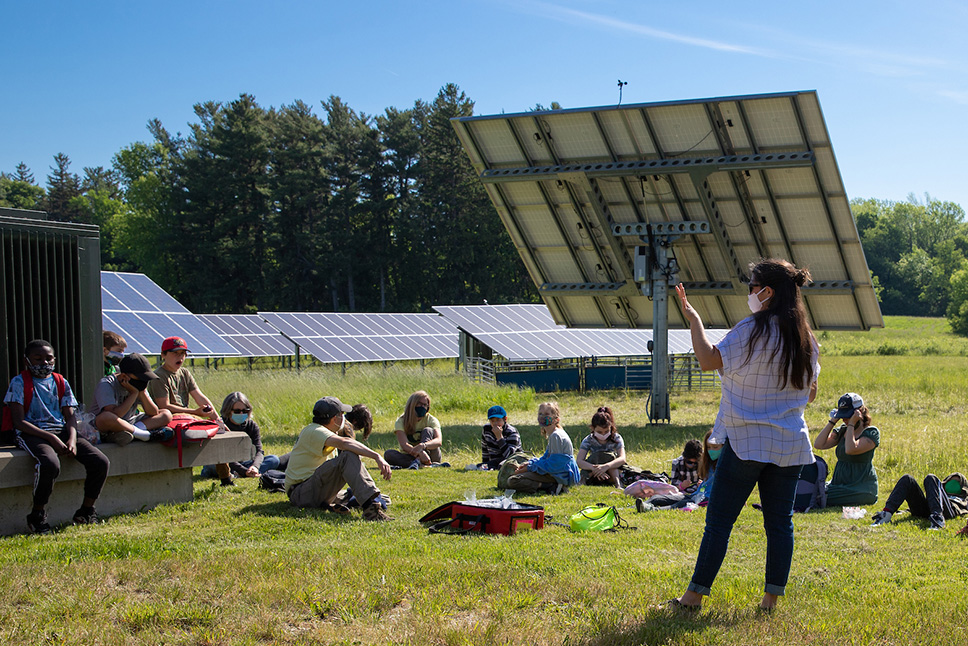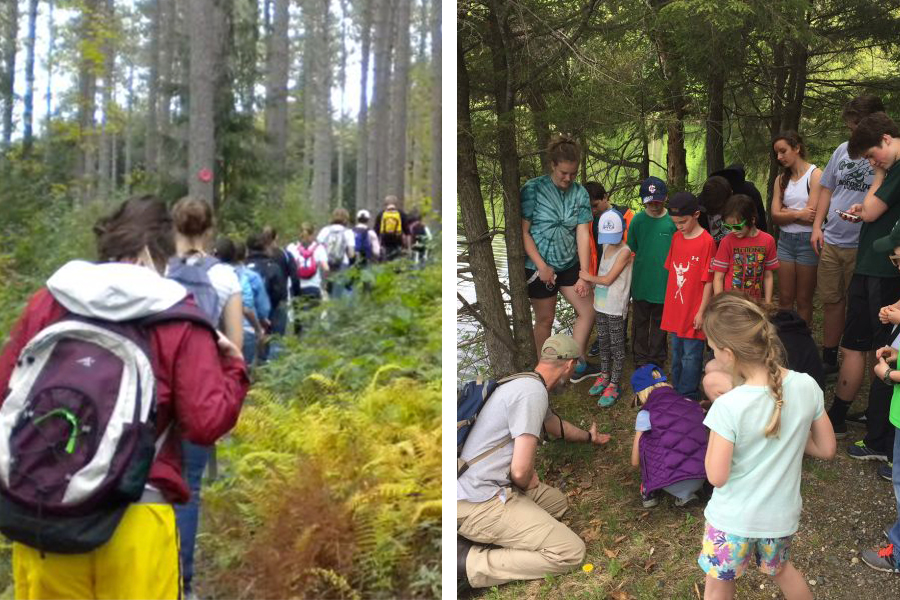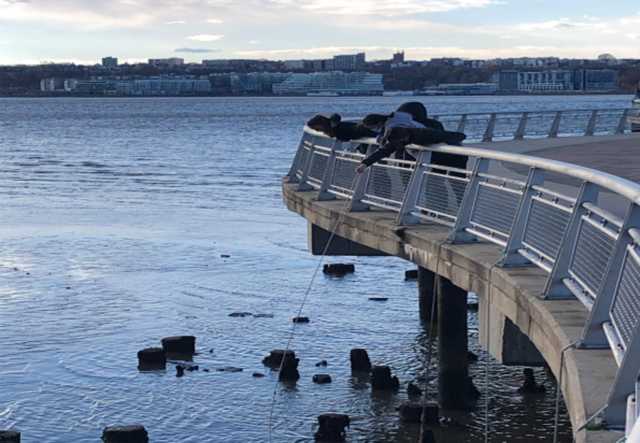I would appreciate receiving the download version.
Getting REAL: A Framework for Climate Change Education

No matter where you live, odds are you probably experienced extreme weather this summer. Floods, fires, and record-breaking temperatures have unfolded around the globe as climate scientists’ predictions come true. We can’t hop out of this proverbial boiling pot, but we are also not helpless. We have a variety of viable solutions that, when engaged in on a collective scale, will slow the warming of the Earth and buy more time to figure out adaptations.
Traditional education methods, focused on information sharing, are frankly too slow to make the cultural shifts needed to address the climate crisis. Students don’t just need to know what climate change is doing to their world; they need to know how they can make a measurable difference through climate change mitigation and adaptation. To gain a sense of self-efficacy, students need to practice making this world a better place. Through action, students develop confidence that they can make a difference and gain first hand insight into how to make a positive impact.
Getting REAL
Equity-centered climate action is the most direct path toward developing the knowledge and skills essential to environmental and social wellbeing. For those feeling climate anxiety and social injustices, equitable climate action also builds hope based on the visible results of student efforts.
What does equitable climate action look like and how can teachers incorporate it into their curricula? This was the driving question and impetus for the REAL Framework featured in the forthcoming publication, “Right Here! An Educator’s Guide to Equitable Climate Action in the Upper Valley,” which I co-authored with Andrew Powers and Michael Duffin of PEER Associates; environmental justice consultant Cassandra Mathelier; and Prosper Valley principal Aaron Cinquemani. This work was inspired by conversations over the years with the Upper Valley Teaching Place Collaborative and supported by the New Hampshire Charitable Foundations' Wellborn Ecology Fund. Teachers, download this guide for free.
REAL—an acronym for Relationships, Equity, Action, and Leadership—is a framework for implementing equity-centered climate change education. The framework, generated from interviews with frontline educators and student leaders in the Upper Valley region of Vermont and New Hampshire, is designed to empower students and help them use these academic building blocks wisely and effectively to create a healthier future for all.

R: Relationships
The REAL framework begins with nurturing Relationships with self, community, and nature.
Why are relationships important for building student agency? Relationships help us understand other points of view and see how our actions impact others. You begin to notice and appreciate differences and to see how things are interconnected.
Plants and animals, and the forests and streams where they live, can be basic entry points to more in-depth investigations into climate change and the social issues that drive it. Here’s what this looks like in practice: Lisa Holtz prepares her Claremont Elementary School third graders for powerful climate stewardship activities by taking them on weekly half-day adventures walking to and learning in nearby Moody Park. They do a lot of exploration and observation and question asking. Lisa’s advice: “Rather than starting with climate change, start with the place and build the sense of wonder.” Helping students connect to the plants, animals, and people in their local place can, in the words of teacher Michelle Fountain, “give a window into what matters to them in that place, then a personal narrative about their identity.”

E: Equity
Considering those relationships, the next step is to explore Equity. At first glance, it is sometimes hard to see the connection between equity and climate change. Equity is the consistent and systematic fair, just, and impartial treatment of all individuals, including individuals who belong to underserved communities that have been denied such treatment. Climate change has a disproportionate impact on marginalized communities and exacerbates existing inequalities (much more on this in our publication!).
To move toward more environmentally sustainable ways of living, we need to think critically about the norms, beliefs, and social injustices that have led to the climate change crisis we now face. Only when we’ve dug deep to understand the origins of our systemic dysfunctions can we begin to reimagine and bravely reconsider new ways of organizing our daily lives and our communities to effectively address these challenges.

One way of beginning to investigate equity is through food. Food is all around us and inextricably connected to the health and well-being of our communities and the environment. Through engaging with food systems at a local level, students can begin to gain a deeper understanding of the intricacies and complexities of environmental, economic, and social justice. And by engaging in hands-on activities like growing food, distributing it to those in need, and working with community partners, students are empowered to take tangible action towards creating a more equitable and sustainable future. In the Food Justice Garden at Vermont’s Sharon Academy, students learn about soil health, regenerative agriculture, and climate solutions as they grow food for local families in need. One student shared why she valued this work: “Because I’m interested in learning more about the problems our world is facing and what I can do to work towards the solution even on a very small scale in my own Vermont town.”
Empathy is a very important feeling that underpins both climate and equity action. At the core of any work around equity is understanding the lived experience of other beings. Plants and animals are also great ways to connect to the “otherness” of human and more-than-human beings in ways that embody thought and care.
A: Action
From there we move to Action, focusing on climate change mitigation and adaptation efforts in the context of place to change the dynamics of extractive systems to more regenerative systems. Action, while hard to do, is a crucial part of building hope in our students as they see that they can make a difference. Studies show that the more youth see that they can make a change, the more they are going to try.
Woodstock Union High School teacher Matt McCormick’s students did this through the lens of fast fashion. Starting with just looking at the labels on their clothes, his students found their way to the story of the fast fashion-producing Rana Plaza building in Dhaka, Bangladesh. Despite known structural flaws, all five garment factories it housed were full of workers when it collapsed in April 2013, killing over a thousand people and injuring thousands more.
Fueled by these findings, learners looked to see where they could make a difference in their local community’s purchasing habits. Students connected with community organizations that purchase t-shirts for uniforms, charity races, and other uses, and took them on as “clients.” Students learned about each organization’s t-shirt needs, then investigated options and provided a consultation about costs and benefits of different choices to educate and advise them about their purchasing options. The guide includes a description of this activity, plus more than 40 other climate action ideas for youth to work with their communities towards climate resilience.

L: Leadership
The final component, Leadership, is an invitation for both educators and students to amplify their impact through collective action, recognizing we need to encourage the voices and gifts of others to participate in climate resilience. In a distributed leadership model, we help students find places where they can shine.
The REAL components naturally scaffold: As relationships develop, so does understanding and caring. From this foundation, a clearer view emerges of the systems that connect self, others, and nature. These systems might include flows of energy, resources, power, and other forces. When investigated, inequities or unhealthy imbalances in our environmental and social systems become more apparent. To change this dynamic, informed action is needed. To change the dynamic more broadly and deeply, leadership is essential.
Use this framework as a springboard for climate change education and action, wherever you might live!
Joan Haley, Ed.D. recently transitioned to a new role on Shelburne Farms’ staff to focus full-time on advancing high-quality climate change education in our programming for teachers and students. Read more about Shelburne Farms’ climate action work.

Educators, Download The Guide
We invite you to peruse the guide to read more in-depth real-life examples that will help you and your students envision what is possible. And although equity and climate change are most certainly serious topics, the experiences presented in the guide help students find joy in community, nature, and accomplishment.
You may also like
Comments
Hi Ab, you can download the guide here: https://shelburnefarms.org/educators/resources/right-here-educators-gui…


